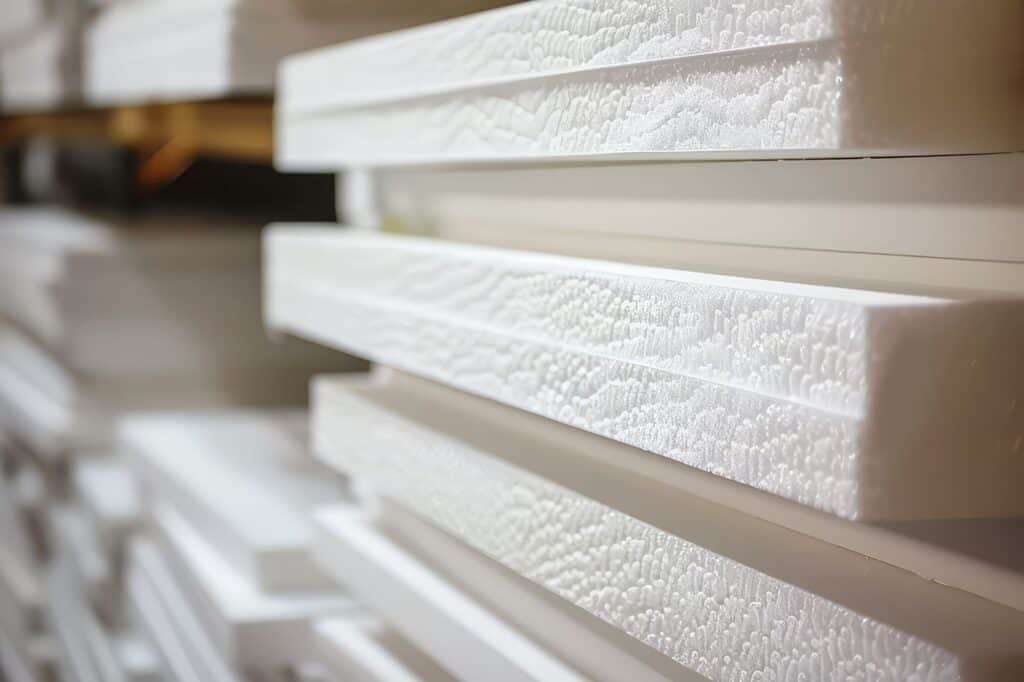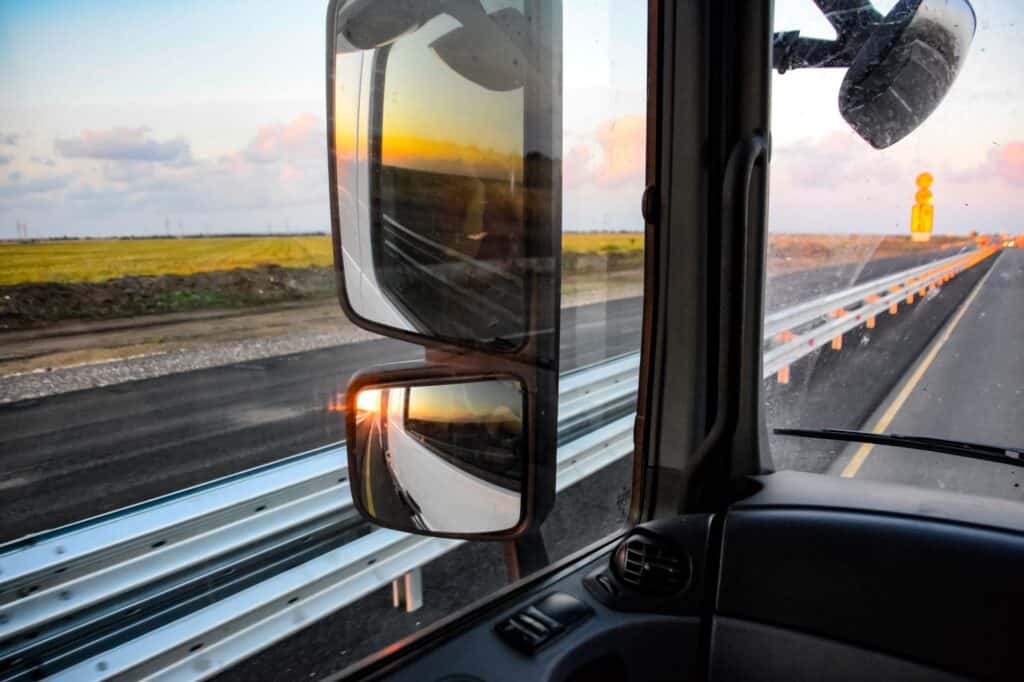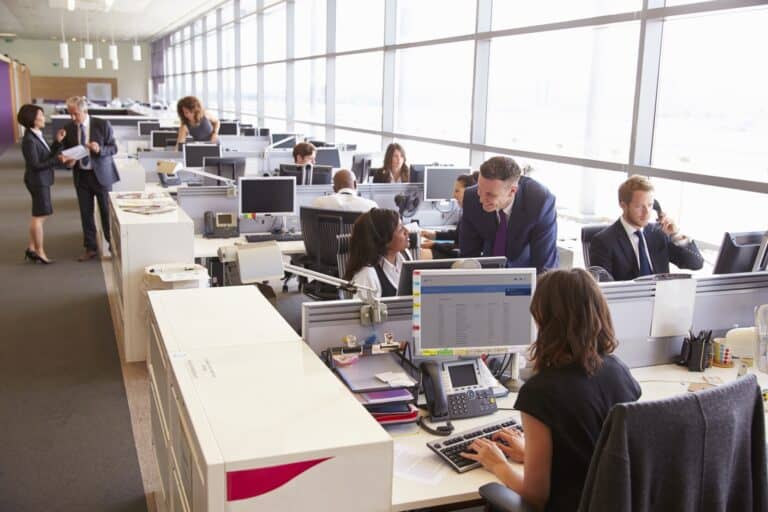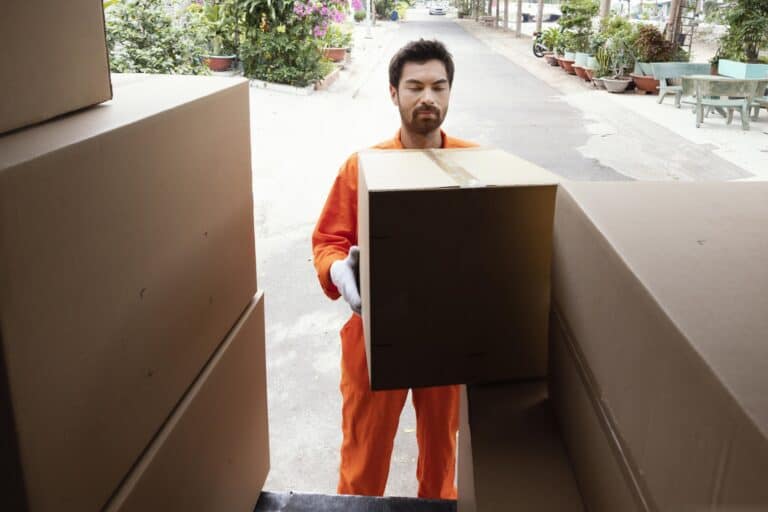Keeping belongings safe during a home move is your top priority, and you’re not alone in this. With a focus on proper packing, labelling, and transportation, our tips will guide you to secure your possessions like a pro. Dive into proven methods and clever tricks that save you from moving mishaps and losses.
Key Takeaways
- Choosing sturdy packing materials and proper labelling are crucial for the safe transport of items, with heavy objects in smaller boxes and fragile items thoroughly wrapped and individually cushioned.
- Investing in professional moving services that are well-vetted for safety, reliability, and proper insurance can safeguard belongings, and coordination with movers ensures a secure and efficient moving process.
- Preparing the new home for arrival with updated locks and security systems, as well as considering long-term storage solutions and maintaining personal safety measures, are essential for a secure relocation.
Selecting the Right Packing Materials
The first step towards guaranteeing the safety of your valuables is choosing the right packing materials. The adage ‘better safe than sorry’ rings true as using appropriate materials increases the likelihood of your belongings arriving unharmed at your destination. Consider the weight distribution in your moving boxes: heavy items like books should find their abode in smaller boxes, while lighter objects can soar in larger containers. An even spread of weight not only makes handling a breeze but also maintains a stable equilibrium.
Akin to a game of Tetris, it is crucial to properly stack your boxes with the heaviest at the bottom to avoid any unfortunate incidents. For those cherishable clothes, wardrobe boxes are your go-to, ensuring your garments travel in style and without a wrinkle.
Sturdy Boxes Over Cardboard Options
When it comes to safeguarding your personal treasures, cardboard boxes may seem like a frugal choice, but sturdy containers are the knights in shining armour you need. Investing in strong boxes is not just a choice but a necessity for the security of your belongings during transit. They’re not just for show; these durable defenders are adept at cradling large, awkwardly shaped items with the right padding and securing smaller ones within a reliable enclosure.
Moreover, using smaller boxes for heavier items isn’t just about preventing damage; it also enhances safety for everyone involved in the move.
The Role of Packing Paper and Bubble Wrap
Imagine each fragile item wrapped in a cocoon of packing paper or bubble wrap, shielded from the jolts and jostles of the journey. While bubble wrap reigns supreme in cushioning your most fragile possessions, packing paper is an unsung hero, both cost-effective and kinder to the environment. It’s versatile, wrapping up a storm across a variety of items and filling those voids in boxes that otherwise spell disaster for your goods.
For the particularly fragile, like electronics and glassware, bubble wrap is the hero you call upon to absorb shocks and protect your collectables. Packing dishes and glassware is a delicate task; wrapping each item individually in bubble wrap or acid-free paper is crucial to prevent breakages. As for your prized artwork, treat it like the masterpiece it is with picture boxes, ample padding, and a strategic ‘X’ across the glass to keep it intact. And for fine china, every piece deserves its own spotlight, wrapped and cushioned in its dish box fortress.
Label Boxes for Priority Handling
Don’t let your fragile items play hide and seek amidst the mountains of boxes. Labelling is your strategic move to signal the need for extra care. Mark the boxes containing breakables with a clear ‘FRAGILE: HANDLE WITH CARE’ and an arrow pointing skyward to ensure they stay upright and unharmed.
This simple act of labelling not only directs careful handling but also prioritises the safety of your treasures.
Ensuring Safe Transportation of Your Belongings

Once your belongings are packed with precision, the next hurdle is safe transport. The moving service you choose becomes your partner in this dance of relocation, so select one with well-maintained vehicles and a reputation for handling unexpected issues with aplomb. Their efficiency can be your peace of mind, keeping your possessions secure even when the unexpected strikes.
Logistics such as securing a parking spot for the moving truck at your new home is just as important as the move itself, as it helps avoid delays and extra charges.
Secure Heavy Items to Prevent Shifts
The journey to your new home can be a bumpy ride, so securing heavy items is non-negotiable. Sturdy boxes come into play again, holding strong against the weight and preventing any great escapes during the move. To pack your boxes properly, place heavy items at the box’s base, securing the tops and bottoms with robust tape to prevent shifts that could lead to damage or, worse, an unravelling during transport.
Discussing weight, a 50-pound limit per box is not merely a suggestion; it’s a proactive step to protect your back and belongings.
Protecting Valuables in Transit
For those small treasures that hold immense value, consider portable safes and locked containers as your moving day bodyguards to keep your valuable belongings safe. Jewellery demands special attention – dedicated jewellery boxes or even pill containers can prevent tangles and tears. And in the realm of moving, insurance is your silent guardian, offering an extra layer of security for those irreplaceable valuables in transit.
Utilising Professional Moving Services
Why carry the weight of a move on your shoulders when professional services can do it for you? The expertise offered by removal firms not only saves you time but tailors their services to your unique needs, whether it’s just the heavy lifting or the whole packing shebang. They’re the stress busters of the moving world, handling the logistics and the grunt work, freeing you to focus on your new beginning.
Remember, it’s important to have additional moving insurance for valuable items to cover any unforeseen incidents.
Vetting Removal Firms for Safety
Not all heroes wear capes, and not all removal firms are created equal. Safety is paramount, so vet your chosen firm for the right licences, insurance, and a track record of customer satisfaction that shines. Dive into their history, and let customer reviews guide you to a firm that practises safety as religion.
Remember, additional insurance options provide more than just a checkbox – they serve as a safeguard for your possessions throughout their journey.
Coordinating with Movers for a Secure Process
Teaming up with your movers is like a well-choreographed ballet; it requires clear communication and precise planning to ensure a secure and seamless move. Confirming the details, from arrival times to special handling instructions, sets the stage for an efficient move. And don’t forget to double-check the move-in date; even a day’s discrepancy can throw a wrench in the works.
TIP
If security is a priority for you, investing in a high-quality disc lock for the moving truck can be a smart decision, ensuring the safety of your valuables during transit.
Preparing Your New Home for Arrival
As the moving day draws near, your new house beckons. But before your possessions take their place, ensure the moving house is primed and ready, not just for comfort, but for security and immediate repose.
A deep clean before your arrival wipes the slate clean, paving the way for a fresh start free from the need to shuffle belongings for a later clean-up. This also ensures that hand washing facilities are pristine and ready for use.
Securing the Property Ahead of Time
The locks on your new home’s doors and windows are the gatekeepers to your sanctuary. Replacing them is not just a suggestion; it’s an essential step to claim your space and protect it from uninvited guests.
Windows, often overlooked, should be equipped with sturdy locks to fortify your fortress. And for those who believe in the power of technology, installing a security system before the move can offer peace of mind and deter any potential threats.
Essential First Steps Upon Arrival
The day has arrived, and as the moving crew unloads, having you there to guide and address any immediate concerns is invaluable. It’s also a moment to take charge of the essentials – record the new home’s utility readings to ensure proper tracking and avoid future disputes.
… record the new home’s utility readings to ensure proper tracking and avoid future disputes.
And the priority box – it’s the first aid kit of moving day, a collection of essentials that grants you the comfort of home even amidst the sea of boxes.
Long-Term Storage Solutions
Sometimes, not everything can make the immediate journey to the new home. That’s where long-term storage solutions come into play, offering a safe haven for those non-essential or yet-to-be-placed items. Whether it’s cost-effectiveness or the assurance of security and reliability you’re after, containerised storage units can be the answer to your storage quandaries. They bridge the gap between two homes, providing a temporary resting place for your belongings and giving you the time to organise and plan the layout of your new space.
Keep in mind, that the most effective storage solutions provide flexibility and access, allowing you to retrieve items according to your convenience.
Choosing the Right Storage Unit
Selecting the right storage unit is akin to choosing a home for your belongings. Understand your storage needs – size, quantity, and specific requirements – to find the perfect match for your items. Location matters too; if you foresee frequent visits to your stored treasures, choose a facility that won’t have you traversing the city every time you need something.
Prioritising Security in Storage
In the world of storage, security reigns supreme. A facility with round-the-clock CCTV and robust security measures is like a fortress for your belongings, ensuring they’re protected even when out of sight.
Maintaining Safety Throughout the Moving Journey
The moving journey is fraught with potential hazards, but with a vigilant eye and the right precautions, you can ensure a safe transition for you and your belongings. Personal safety should be at the forefront, with special attention to preventing accidents and injuries that can occur amidst the chaos of a move. Donning fitted clothing and sturdy shoes is a simple yet effective shield against the unexpected.
Awareness is your best ally – paying attention to potential tripping hazards and proper lifting techniques is key to ensuring a safe move.

Health and Safety Tips
Clear walkways are the highways of a safe move – free them of obstacles to ease the path for movers and prevent trips or falls. Some tips to ensure clear walkways during a move are:
- Remove any obstacles such as furniture or clutter from the path
- Secure loose cables and wires away from foot traffic
- Place boxes and other items away from walkways to prevent accidents
Following these essential tips will help ensure a smooth and safe moving process.
Proper lifting techniques, hydration, and nutrition are the triad of physical well-being during a move – ignore them at your peril. Elevating boxes to reduce bending can save your back from undue strain, and staying fueled and hydrated keeps your energy levels up for the tasks at hand.
Minimising Risks on Moving Day
On a moving day, your home becomes a hive of activity. Protect your young ones, furry friends, and other household members by keeping them away from the hubbub and potential dangers. Doors, particularly to storage areas, should remain shut to prevent curious explorers from encountering falling boxes or other hazards.
In today’s era of oversharing, it’s wise to resist the temptation to announce your move on social media; maintaining privacy can protect your belongings when they are most vulnerable.
Summary
As we wrap up this guide, remember that the key to a secure relocation lies in the attention to detail – from selecting the right packing materials to coordinating with movers, and safeguarding your new home. Embrace these essential tips, and you’ll not only protect your belongings but also pave the way for a stress-free moving experience. Carry forward the wisdom gleaned here, and may your next move be as smooth as the floors of your new haven.
Frequently Asked Questions
What’s the best way to pack heavy items to ensure they’re safe during a move?
To pack heavy items safely for a move, use small, sturdy boxes and place the items at the bottom of the box, securing it with strong packing tape to prevent breakage and ensure stability during transportation.
How can I protect my valuable jewellery during the move?
You can protect your valuable jewellery during the move by using dedicated jewellery boxes, small containers, or jewellery rolls to keep them organised and prevent damage. Additionally, thread necklaces through straws to prevent tangling.
Are there any benefits to hiring professional movers, and what should I look out for?
Hiring professional movers can save you time and stress with their expertise and tailored services. When looking for one, ensure they have proper licences, insurance, and a good safety and customer satisfaction record.
How do I ensure the security of my new home before moving in?
Ensure the security of your new home before moving in by changing all locks on doors and windows and setting up a security system for continuous monitoring. This will prevent unauthorised access and provide added peace of mind.
What should I consider when choosing a long-term storage unit?
When choosing a long-term storage unit, consider the size and special requirements of your items, opt for a convenient location if you need frequent access, and prioritise facilities with robust security measures. Ultimately, these factors will help you select the right unit for your long-term storage needs.







